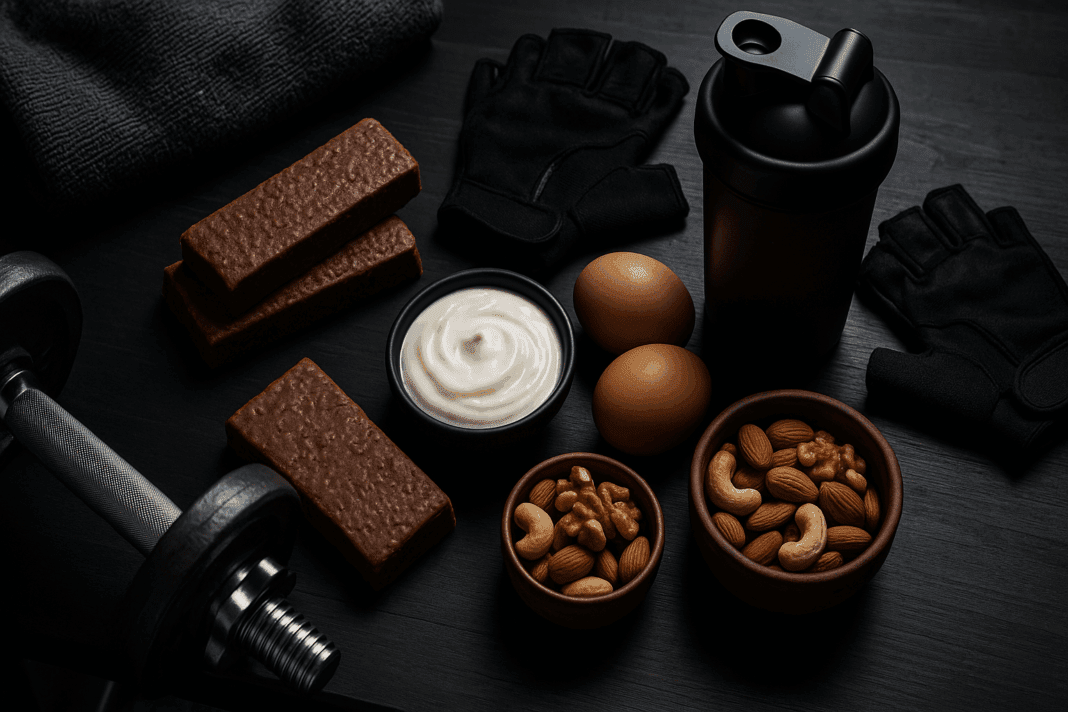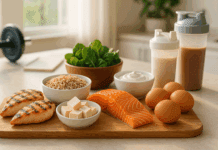For individuals committed to gaining lean mass and supporting muscle development, incorporating high-quality snacks into a daily routine can make the difference between stagnation and success. While main meals often receive the bulk of attention in high-protein diet planning, the right between-meal options can be just as vital. This is especially true during bulking phases, where increased caloric and protein intake is essential to achieving hypertrophy and sustaining energy throughout rigorous training. For this reason, identifying the best bulking snacks is not just a convenience but a strategic decision that can accelerate results in both strength and size.
You may also like : The Ultimate High-Protein Nutrition Plan: How to Gain Muscle in Women Safely and Effectively
Protein-rich snacks act as nutritional bridges that keep amino acid levels elevated, promote muscle repair, and prevent catabolic states between meals. They also support metabolic function, regulate appetite, and aid recovery after workouts. However, not all high-protein snacks are created equal. From whey-based innovations to whole-food powerhouses, the options are vast, and the challenge lies in selecting snacks that combine optimal protein content, nutrient density, and convenience. In the following sections, we will explore the most effective and accessible options available today, uncovering the best bulking snacks that align with expert dietary guidance and high-performance nutritional standards.
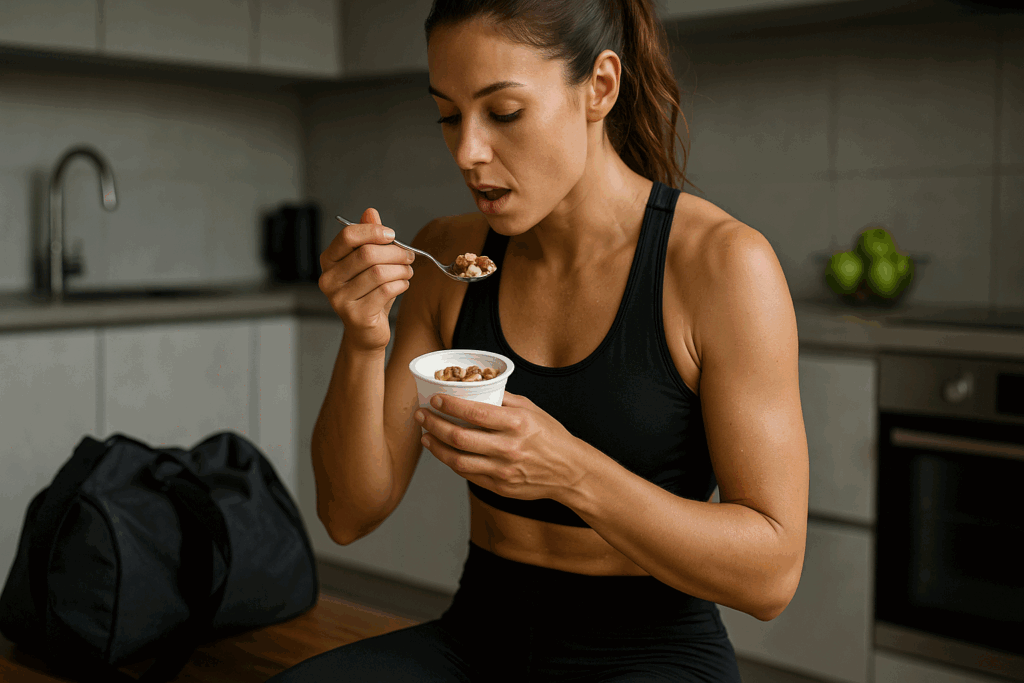
Why Strategic Snacking Is Critical in High-Protein Diets
In the realm of high-protein nutrition, meal frequency and nutrient timing are not merely secondary considerations; they are core pillars that determine how effectively one’s body adapts to increased training loads and recovers from muscular stress. Strategic snacking plays a central role in supporting those goals. Unlike the popular misconception that snacking is inherently unhealthy or impulsive, science-backed nutrition strategies recognize purposeful snacking as a way to enhance protein synthesis and energy utilization throughout the day.
Bulking snacks, in particular, serve to extend anabolic windows beyond the confines of breakfast, lunch, and dinner. During bulking phases, the body requires a consistent influx of calories and protein to promote tissue growth. When chosen correctly, snacks can help maintain this intake without the digestive burden of larger meals. A thoughtfully selected protein bar, Greek yogurt, or handful of nuts can offer anywhere from 10 to 30 grams of protein per serving, effectively complementing structured meals and maintaining nitrogen balance.
Moreover, high-protein snacks contribute to blood glucose regulation, which is essential for mood stability, focus, and workout performance. The thermic effect of protein-rich foods also increases metabolic rate, making them more effective than carbohydrate-heavy snacks at supporting lean mass gain. This is particularly relevant when trying to minimize fat gain during bulking. Through careful planning, athletes and active individuals can use the best bulking snacks to create a nutrient-dense, performance-driven eating schedule that fosters sustained growth.
Understanding the Science Behind Protein Timing and Satiety
The timing of protein intake has long been a subject of study in sports and nutritional science. One of the key takeaways from emerging research is that evenly distributing protein consumption across the day can enhance muscle protein synthesis more effectively than front-loading it during one or two meals. This approach has been supported by findings that show consistent protein intake—particularly in 3- to 4-hour intervals—leads to greater muscle retention and improved anabolic signaling pathways.
High-protein snacks provide the perfect vehicle to implement this principle. By introducing moderate doses of protein between meals, these snacks keep amino acid levels in the bloodstream at anabolic levels, reducing the chances of muscle breakdown. Additionally, the satiety effect of protein is another critical factor. Unlike carbohydrates and fats, protein significantly reduces hunger by influencing hormones such as ghrelin and peptide YY. This appetite-regulating benefit is especially useful during clean bulking cycles, where total calorie intake needs to be high, but not excessive to the point of gaining unnecessary fat.
From an energy balance perspective, bulking snacks allow athletes to increase caloric intake without overwhelming the digestive system. Eating large volumes at once can lead to bloating, discomfort, and poor nutrient absorption. Instead, a protein-rich snack spread strategically through the day helps maintain digestive comfort while ensuring the body is continually fueled for growth and performance.

The Best Bulking Snacks for On-the-Go Muscle Fueling
Convenience is often the deciding factor in whether a high-protein snack becomes a consistent part of a bulking routine. In a world where work, training, and life commitments intersect unpredictably, portable and ready-to-eat options can make or break consistency. The best bulking snacks in this category include items such as protein bars, jerky, and high-protein trail mixes. These are ideal for gym bags, desk drawers, or glove compartments, ensuring there’s always a muscle-supporting option close at hand.
High-quality protein bars have evolved well beyond their former image as overly sweet, synthetic-tasting calorie bombs. Today’s formulations offer between 15 and 25 grams of protein, often derived from whey, casein, or plant-based blends. Many are also fortified with fiber, healthy fats, and micronutrients, making them a legitimate meal bridge rather than a glorified candy bar. When selecting a bar, it’s critical to examine ingredient lists and protein sources—opt for minimal added sugars and prioritize bars with whole-food ingredients.
Jerky, especially turkey or grass-fed beef jerky, provides a lean, shelf-stable protein source that delivers substantial satiety. Most varieties offer around 10 grams of protein per ounce, with minimal carbohydrates and fats. They also contain bioavailable iron and zinc, supporting recovery and hormone function. Similarly, trail mixes that include nuts, seeds, and protein crisps or edamame offer a customizable, energy-dense option with healthy fats and steady-digesting calories. For those who train multiple times per day or struggle to meet caloric needs, these on-the-go snacks are indispensable.
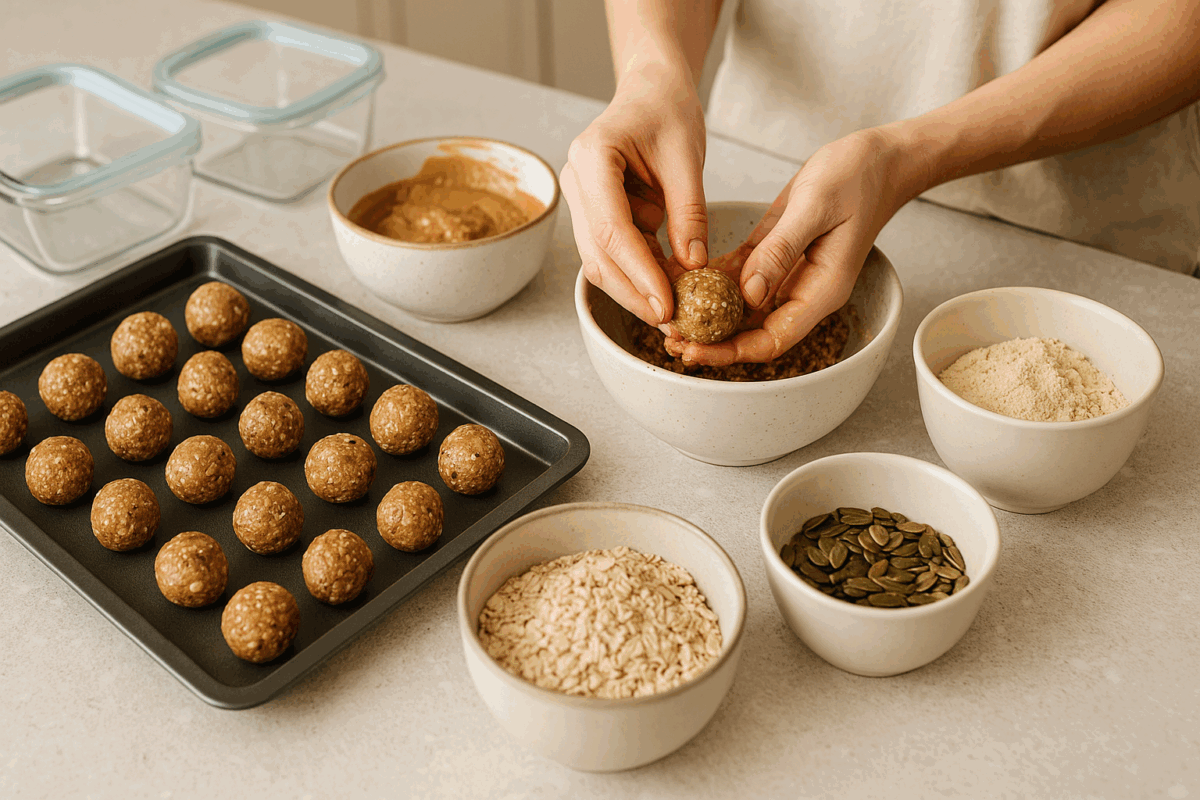
Homemade Snack Prep: Elevating Nutrition with DIY Protein Bites
While packaged snacks offer convenience, homemade high-protein options provide unparalleled control over ingredients, macronutrient ratios, and portion sizes. DIY protein snacks can be customized to align with specific dietary goals—whether it’s boosting fiber, reducing sugar, or increasing healthy fat content. Among the most popular homemade bulking snacks are protein balls, high-protein muffins, cottage cheese parfaits, and egg-based muffins or wraps.
Protein balls, often made from oats, nut butters, protein powder, and seeds, are a perfect example of a nutrient-dense snack that can be batch-prepared and refrigerated for easy access. A typical two-ball serving can deliver 12–20 grams of protein, along with sustained energy from complex carbohydrates and unsaturated fats. Adjusting the ingredients allows for endless flavor combinations, from chocolate-peanut butter to almond-cherry or cinnamon-date.
Cottage cheese parfaits layered with fruit, granola, and nut butter provide a powerful balance of slow-digesting casein protein, fiber, and healthy fats. Similarly, high-protein muffins made with Greek yogurt, eggs, and almond flour can serve as a satisfying mid-morning or pre-workout option that also satisfies sweet cravings without the blood sugar spike. With just a bit of planning, these homemade snacks help bridge the gap between meals and training sessions while adding variety to a bulking diet.
Bulking Snacks That Deliver Complete Proteins for Optimal Recovery
When evaluating the best bulking snacks, one of the most crucial considerations is whether the protein source is complete—that is, whether it provides all nine essential amino acids. Complete proteins are especially vital for muscle recovery and adaptation, and while many animal-based snacks fulfill this criterion naturally, some plant-based options require more careful pairing.
Greek yogurt, for instance, is a bulking favorite not just for its rich casein content, but also for its complete amino acid profile. A single serving of plain Greek yogurt provides 15–20 grams of complete protein, calcium for bone support, and probiotics that enhance gut health. For those avoiding dairy, edamame emerges as an exceptional alternative. Steamed edamame pods or dry-roasted edamame snacks are naturally high in protein, rich in fiber, and provide all essential amino acids—a rare trait among legumes.
Hard-boiled eggs are another ideal bulking snack, offering complete protein, choline for brain function, and a satiating fat profile. When paired with whole-grain toast or vegetables, they provide a balanced nutrient matrix. Protein smoothies made with whey isolate or a plant-based blend of pea, rice, and hemp protein can also serve as complete-protein snacks when combined with fruits, spinach, oats, or almond butter. By prioritizing these options, athletes ensure that every bite contributes to recovery and adaptation at the cellular level.

The Role of Healthy Fats and Fiber in Best Bulking Snacks
While protein is the cornerstone of any bulking snack, the supporting nutrients—particularly healthy fats and fiber—play an equally important role in how the snack affects energy levels, hormonal function, and digestion. Fat is a dense source of calories, making it particularly useful for individuals who struggle to eat enough to support muscle growth. Additionally, fats like omega-3s and monounsaturated fatty acids enhance inflammation control, cell membrane integrity, and anabolic hormone synthesis.
Avocado slices paired with whole-grain crackers and tuna salad represent an excellent example of a high-protein, high-fat snack that supports these goals. Nuts, such as almonds and walnuts, not only provide 6–8 grams of protein per ounce but are also rich in magnesium and vitamin E—nutrients associated with recovery and reduced oxidative stress. When combined with dried fruit or dark chocolate, they create satisfying, nutrient-packed bulking snacks.
Fiber also plays a crucial role by promoting digestive health, slowing glucose absorption, and extending satiety. Including fibrous elements such as oats, flaxseed, or chia seeds in protein-based snacks ensures better blood sugar control and gastrointestinal comfort. For example, overnight oats made with protein powder, chia seeds, and berries provide a complete macro and micronutrient profile, ideal for both recovery and mass gain. This holistic approach to snack design maximizes the functional benefit of each bite.
Using Best Bulking Snacks to Maximize Pre- and Post-Workout Nutrition
Nutrient timing becomes especially relevant when discussing snack consumption around workouts. The pre-workout window is a prime opportunity to fuel the body with energy-sustaining carbohydrates and protein that enhances performance and reduces muscle breakdown. In contrast, the post-workout window calls for quick-absorbing protein and moderate carbohydrates to kick-start recovery and replenish glycogen.
One of the best bulking snacks for pre-workout energy is a banana paired with a protein shake or peanut butter on whole-grain toast. This combination provides fast-digesting carbs and muscle-preserving protein, fueling both endurance and resistance sessions. For longer workouts, energy bites containing oats, dates, and whey protein offer a portable and digestible fuel source that prevents mid-session fatigue.
Post-workout, rapid nutrient delivery is key. Whey protein isolate mixed with water or almond milk is quickly absorbed and, when combined with a banana or rice cakes, ensures glycogen replenishment. Chocolate milk has also been validated in research as a well-balanced post-training snack, offering an optimal carbohydrate-to-protein ratio for muscle repair. Using these best bulking snacks strategically around training can dramatically accelerate recovery and muscle gain.
Common Pitfalls to Avoid When Choosing Bulking Snacks
Despite the best intentions, many high-protein dieters fall into common traps when selecting snacks. One frequent mistake is choosing options that are high in protein but also excessively high in sugar or saturated fats. Flavored yogurts, protein cookies, and sweetened protein bars often contain more sugar than a regular candy bar, undermining their nutritional value. Reading labels and understanding macronutrient ratios becomes essential to avoid such errors.
Another issue is overlooking micronutrient density. Some bulking snacks provide ample calories and protein but little in the way of vitamins, minerals, or fiber. This imbalance can lead to deficiencies that impact performance, immune function, and overall health. Choosing whole-food snacks or fortified options ensures a more balanced intake.
Lastly, inconsistency is a hidden enemy in bulking efforts. Even the best bulking snacks only work when consumed consistently and in the right quantities. Forgetting to pack a snack, skipping meals, or failing to track intake can all slow progress. Developing habits—such as preparing snacks in advance or setting reminders—ensures sustained nutritional support during muscle-building phases.
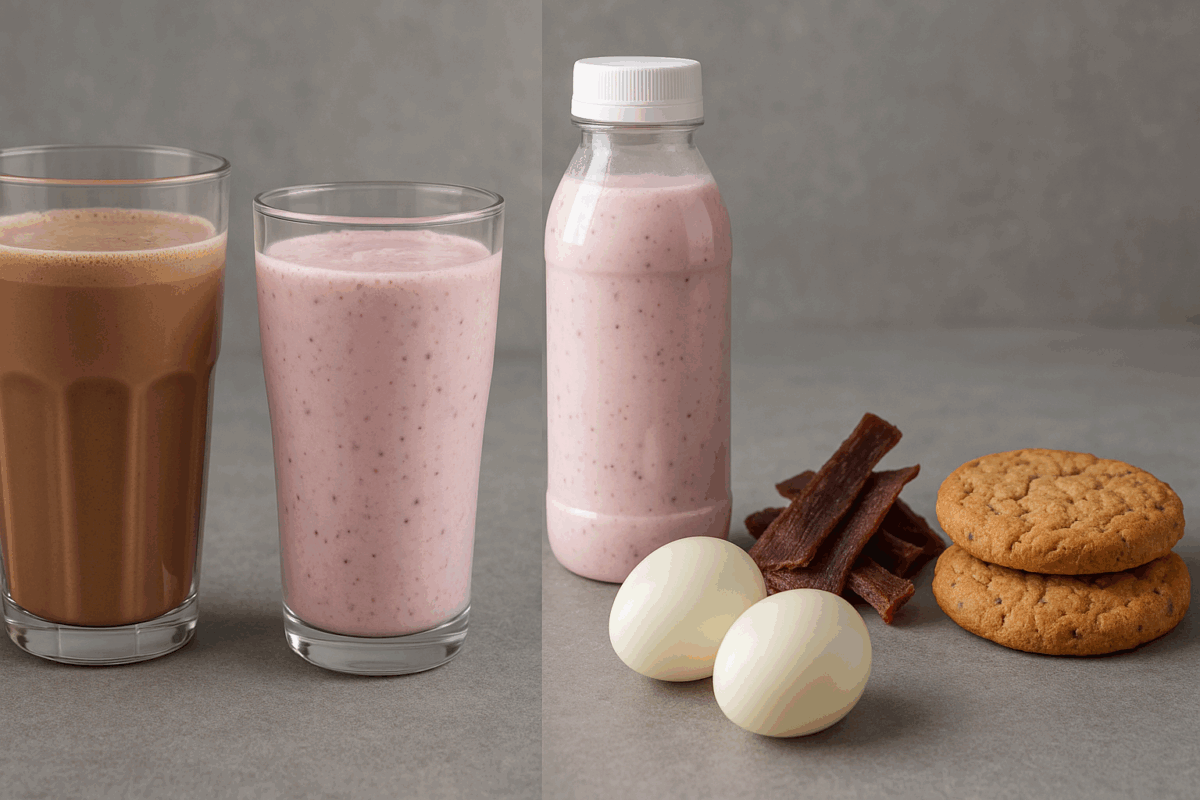
Liquid vs. Solid Snacks: Timing Your Protein Delivery Format
While the macronutrient content of snacks is paramount, the physical form—liquid or solid—also matters. Liquid snacks are digested and absorbed faster, making them ideal for post-workout consumption when nutrient delivery speed is crucial. Conversely, solid snacks provide satiety and slower nutrient release, making them better for between-meal hunger management and overnight muscle maintenance.
High-protein liquid snacks include whey protein shakes, kefir smoothies, and protein-enhanced lattes. They are especially useful for early-morning training sessions or post-cardio refueling when appetite is low. Additionally, their ease of preparation suits individuals with tight schedules or high training volumes.
Solid snacks like beef jerky, boiled eggs, or protein cookies offer chew-resistance, which can trigger hormonal responses related to satiety. They also suit scenarios where digestive pacing is desired, such as before long meetings or during travel. Recognizing when to use each format ensures that snacks complement—not compete with—your broader bulking protocol.
Specialty Dairy Snacks: Skyr, Quark, and Whey Cheese
Beyond traditional dairy options like Greek yogurt and cottage cheese lie lesser-known European imports that are exceptionally well-suited to bulking. Icelandic skyr and German quark are both high in protein, low in fat, and rich in calcium, offering new textures and tastes for dietary variety.
Skyr is technically a cheese but eaten like yogurt. Its thick texture makes it ideal for layering with fruit, oats, and seeds to create parfait-style snacks that are visually appealing and macro-balanced. With 17–20 grams of protein per 150g serving, it delivers a substantial protein load in a compact form.
Quark is similarly high in protein and often used in high-performance European diets. It blends seamlessly into smoothies, pancake batter, or dips, enabling seamless integration into both sweet and savory snack formats.
Whey cheese, a by-product of cheese-making (like ricotta), contains bioactive peptides and can be spread on toast, baked into muffins, or combined with cocoa and stevia for a dessert-like experience. These innovative dairy snacks help stave off taste fatigue while maintaining nutrient consistency.
Dessert-Inspired Bulking Snacks: When Cravings Meet Macronutrients
Bulking diets can become monotonous, making adherence challenging. Incorporating dessert-inspired snacks not only satisfies cravings but also prevents cheat-day spirals. When designed intelligently, desserts can support growth without derailing macro targets.
Protein cheesecakes, for example, use cottage cheese, egg whites, and whey to create a low-carb, high-protein dessert. Add almond flour and a stevia-based sweetener for taste without insulin spikes. Another favorite is the protein brownie—crafted from black beans, cocoa, and isolate protein powder—which provides fiber, antioxidants, and plant-based protein in one indulgent bite.
Frozen yogurt bark, made with Greek yogurt, berries, and protein crisps, offers a cooling post-workout treat. Not only do these dessert-style bulking snacks help maintain mental satisfaction, but they also align with nutritional goals when portioned and timed correctly.

Crafting the Ultimate Bulking Snack Plan for Long-Term Gains
Building a bulking snack plan that supports sustainable gains requires more than impulse purchases or haphazard choices. It involves calculating caloric needs, estimating protein distribution, and planning for various scenarios—pre-workout, post-workout, travel, workdays, and weekends. A weekly plan that includes a mix of packaged and homemade options ensures variety and minimizes burnout from repetitive choices.
Integrating best bulking snacks into a larger nutrition strategy also means balancing macronutrients across the entire day. For instance, if a lunch meal is low in fat, the following snack can help rebalance the day by including nuts or avocado. If breakfast is fiber-deficient, a snack with flaxseed or berries can fill the gap. This responsive, dynamic approach helps ensure nutritional adequacy without relying on monotonous meal prep.
Tracking progress is also important. Using apps or journals to monitor body weight, strength metrics, and digestive comfort can help adjust snack selections as needed. If weight gain plateaus, increasing snack portion sizes or frequency may be the solution. Conversely, if excess fat gain occurs, reducing calorie density while maintaining protein levels helps optimize lean mass acquisition. With attention and intention, best bulking snacks become not just helpful, but indispensable allies in reaching peak performance and physique goals.
FAQ: Expert Answers About Choosing and Using the Best Bulking Snacks for Long-Term Muscle Gains
1. How can I plan my day around high-quality bulking snacks to prevent overeating at meals?
Strategically incorporating the best bulking snacks between meals can help regulate hunger hormones and maintain stable energy levels, which is essential for controlled bulking. Instead of viewing snacks as mini-meals, think of them as nutrient-timed fuel sources. For instance, a protein-rich snack two hours before lunch can reduce your chances of overeating complex carbs or fats during the main meal. It’s also effective to have pre-portioned bulking snacks that combine proteins, slow-digesting carbs, and healthy fats, such as cottage cheese with walnuts or Greek yogurt with oats. Over time, this structured snacking routine trains your metabolism to expect consistent nourishment, enhancing lean mass gains without triggering unnecessary fat storage.
2. What are some overlooked bulking snacks that support hormone balance and muscle recovery?
Beyond the usual peanut butter and protein bars, certain lesser-known options pack a significant anabolic punch. Hard-boiled eggs paired with avocado, chia pudding with whey isolate, or roasted chickpeas tossed in olive oil offer more than just calories—they deliver essential micronutrients like zinc, magnesium, and omega-3s that support testosterone levels and muscle protein synthesis. Fermented dairy like kefir also promotes gut health, which plays an indirect yet crucial role in nutrient absorption and hormone regulation. These types of bulking snacks are ideal for athletes or lifters who want to promote internal balance while driving muscular repair.
3. How do the best bulking snacks support brain function during a high-calorie diet?
Bulking diets often focus on muscle gains, but cognitive performance can decline if poor food choices dominate your intake. The best bulking snacks contain nutrients that nourish both muscles and the brain—like omega-3-rich seeds, eggs, or walnuts that support neurotransmitter function. For example, a smoothie made with Greek yogurt, flaxseeds, blueberries, and whey protein offers leucine for muscle growth and antioxidants for neuroprotection. Snack timing is also important—brain fog can often be alleviated by spacing out carb-dense snacks to avoid insulin crashes. A nutrient-dense snack at mid-morning or mid-afternoon ensures mental clarity throughout intense training cycles.
4. Are bulking snacks helpful for people with fast metabolisms who struggle to gain weight?
Absolutely—individuals with ectomorphic body types or high basal metabolic rates benefit immensely from energy-dense, portable options that can be consumed frequently. The best bulking snacks for these individuals are those that are calorie-rich without being overly voluminous—such as nut butter sandwiches, trail mixes with added dried fruit, or banana and honey rice cakes. These snacks allow for discreet yet frequent caloric loading throughout the day. Over time, they also prevent the common fatigue and appetite loss experienced when trying to cram all calories into three large meals, which can stall weight gain progress.
5. How can you modify bulking snacks for nighttime use without disrupting sleep?
Evening snacks need to be adjusted to support muscle repair while promoting restful sleep. Avoiding large portions of sugar or heavy saturated fats is key. Ideal nighttime bulking snacks include casein-based options like cottage cheese with berries or almond butter on whole grain toast. These provide slow-releasing amino acids that fuel muscle recovery overnight. Add-ins like tart cherry juice or a sprinkle of magnesium-rich pumpkin seeds can enhance melatonin production and sleep quality. With careful formulation, your nighttime snack can become a dual-purpose tool for hypertrophy and restorative sleep.
6. How do bulking snacks fit into the needs of vegetarian or vegan athletes?
Plant-based athletes face unique challenges in meeting their caloric and amino acid needs. The best bulking snacks for vegans must combine complementary proteins, such as brown rice cakes with almond butter and hemp seeds or lentil hummus with sprouted grain crackers. Edamame, soy yogurt, and quinoa salad cups also offer high protein density per bite. When strategically spaced between meals, these snacks can supply complete amino acid profiles while also delivering essential nutrients like iron, calcium, and B12. This approach supports consistent muscle growth without compromising ethical or dietary choices.
7. What psychological advantages come from choosing the best bulking snacks instead of relying solely on large meals?
Snacking mindfully with high-quality, structured options reduces the mental and emotional burden of consuming massive, bloating meals. It encourages a steady, manageable intake rhythm, which can boost adherence and reduce stress. Bulking snacks also provide psychological “wins” throughout the day—each snack becomes a checkpoint that reinforces progress. This is especially useful for people prone to disordered eating habits, as it reframes food as performance fuel rather than a stressor. Additionally, the variety that bulking snacks introduce can keep motivation high during long gain phases, preventing taste fatigue and burnout.
8. How can travel-friendly bulking snacks maintain anabolic momentum on the go?
Busy lifestyles, travel, and unpredictable work schedules can disrupt meal timing, but well-chosen portable snacks prevent muscle catabolism. Some of the best bulking snacks for mobility include homemade protein muffins, shelf-stable tuna packs with whole grain crackers, and single-serve nut butter pouches paired with bananas. Jerky, dried lentil snacks, and protein cookies fortified with collagen or creatine also make the cut. These options allow for quick, strategic feeding opportunities—essential for keeping protein synthesis elevated during long gaps between meals or workouts when on the road.
9. What role do bulking snacks play in long-term physique maintenance after a bulking cycle?
Post-bulking, snack timing and composition help manage reverse dieting and reduce rebound fat gain. The best bulking snacks—when slightly adjusted in portion size—can be repurposed to help maintain lean mass. For example, a protein-rich yogurt parfait can go from 500 calories to 250 by altering toppings while keeping satiety high. This nutritional continuity reduces psychological resistance to transitioning into maintenance mode. Smart snacking during this phase prevents muscle loss, stabilizes blood sugar, and makes it easier to re-enter a bulking or cutting phase without major body composition swings.
10. Why are the best bulking snacks critical for sustainable mass gains in older adults?
As we age, anabolic resistance makes muscle-building harder. Older adults benefit greatly from nutrient-dense bulking snacks that are easy to digest and rich in leucine, calcium, and vitamin D. Examples include Greek yogurt smoothies with added collagen peptides, fortified oat bars, and blended cottage cheese with berries and walnuts. These snacks support sarcopenia prevention and joint health while delivering essential muscle-building nutrients. They also encourage frequent protein feedings without overwhelming digestion, which is critical for older lifters or active adults who want to maintain strength and function into later years.
Conclusion: Why the Best Bulking Snacks Are Key to High-Protein Diet Success
In the quest for lean mass, athletic performance, and muscular development, consistency is king—and snacks are the glue that hold the high-protein lifestyle together. Through this deep exploration of bulking-friendly options, it becomes clear that the best bulking snacks are not simply fillers between meals but powerful nutritional tools that support recovery, energy balance, and sustained anabolic activity.
Whether it’s a protein-packed homemade muffin, a shelf-stable beef jerky, or a post-workout smoothie crafted for rapid absorption, each choice adds a critical layer to your overall dietary architecture. Prioritizing complete proteins, healthy fats, and complementary nutrients allows these snacks to work synergistically with main meals, transforming the way we fuel muscle gain. Avoiding common nutritional pitfalls and aligning snack intake with your training and recovery needs will maximize the benefits of every bite.
As you continue to refine your approach to bulking and muscle-building, remember that the most successful nutrition strategies are those you can sustain. By stocking your kitchen, gym bag, and daily routine with the best bulking snacks, you equip yourself with the convenience, satisfaction, and biological edge necessary to achieve your goals—one strategic snack at a time.
Further Reading:
High-Calorie Snacks for When You Need To Gain Weight
15 High Protein Snacks Great for Building Muscle Mass
10 High-Calorie Snacks for Weight Gain, According to Dietitians


